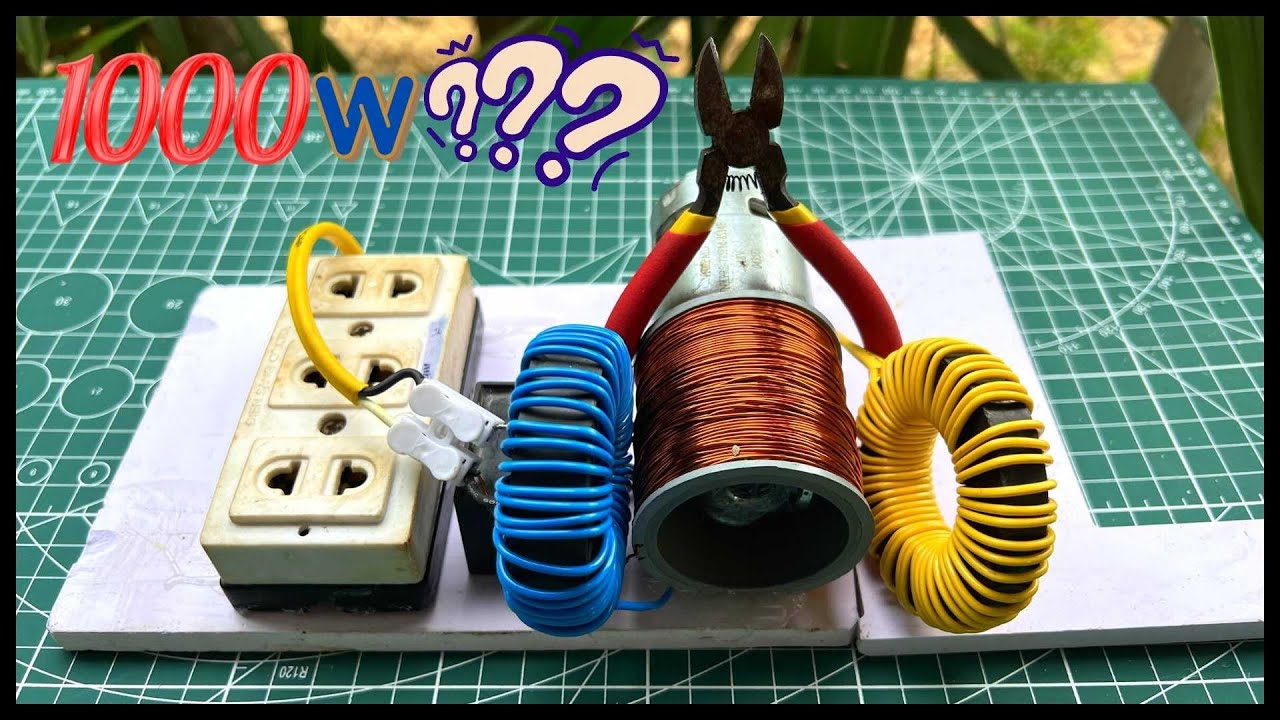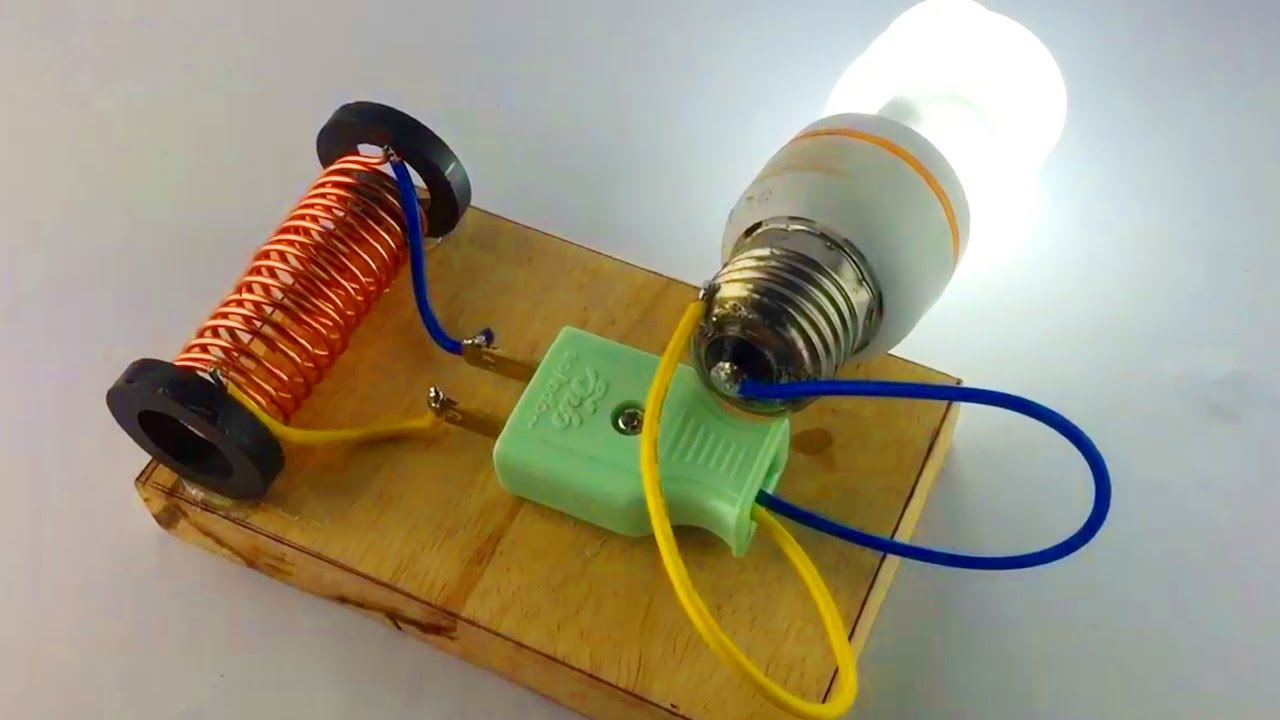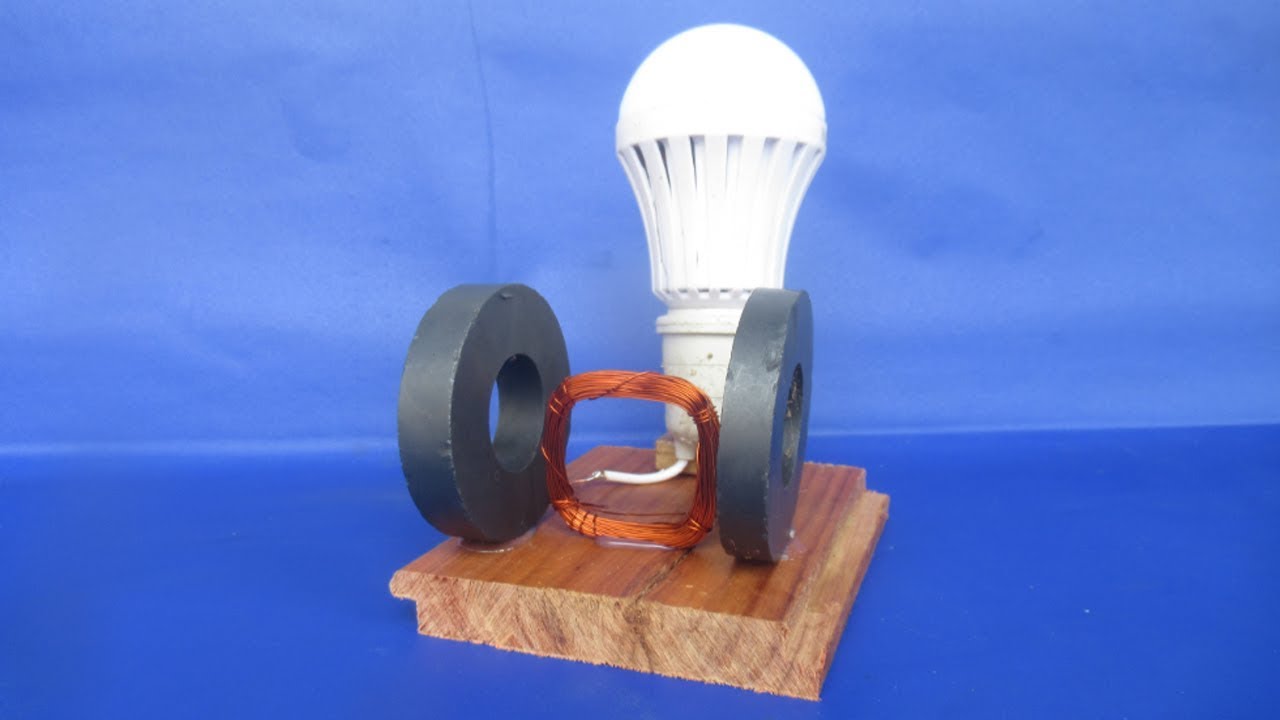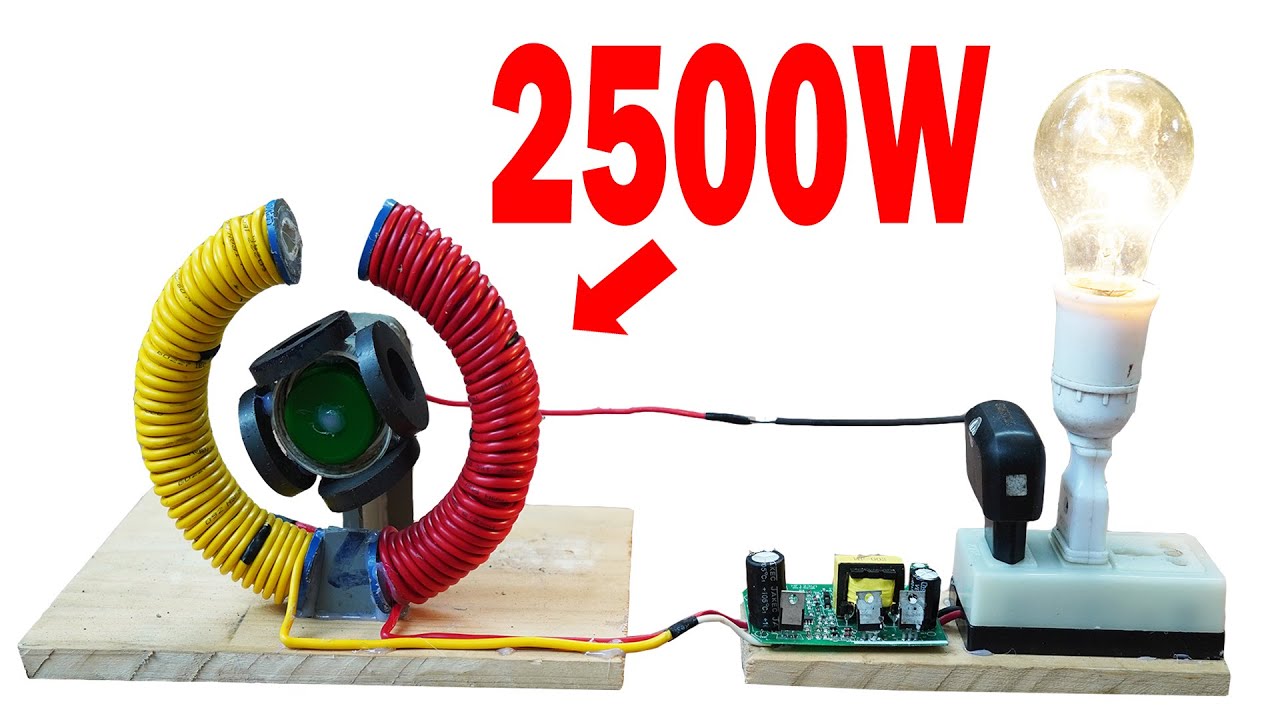Introduction to Electricity Generation Using Magnets

Have you ever wondered how magnets can produce electricity? It’s a fascinating process that combines both science and creativity! In this guide, we’ll walk you through the steps of generating electricity using magnets. Whether you're a curious beginner or a budding inventor, this journey into the world of magnetism will surely spark your interest. So, grab your tools and let’s dive in!
Also Read This: How to Create Stocking Net Flowers: Easy Craft Tutorial on Dailymotion
Understanding the Basics of Electromagnetism

At its core, electromagnetism is the interaction between electricity and magnetism. These two concepts are intertwined, and understanding them is crucial for generating electricity using magnets. Let’s break it down:
- Magnetic Fields: Every magnet has a magnetic field, which is an invisible force that can attract or repel other magnets and certain metals. The area around a magnet where this force is effective is called the magnetic field.
- Electromagnetic Induction: This is the process by which a change in the magnetic field can generate an electric current. When a magnet moves through a coil of wire or when a coil moves through a magnetic field, electrons in the wire are set in motion, creating electricity.
- Faraday’s Law: Named after Michael Faraday, this law states that the induced electromotive force (or voltage) in any closed circuit is equal to the rate of change of the magnetic flux through the circuit. In simple terms, moving a magnet in and out of a coil of wire will produce electricity!
To visualize this, think of a bicycle dynamo. As you pedal, a small magnet spins inside a coil, generating electricity to power your bike’s lights. This principle is at the heart of many electricity-generating devices!
Now, let’s cover some essential components:
| Component | Function |
|---|---|
| Magnet | Creates a magnetic field necessary for induction. |
| Coil of Wire | Conducts electricity generated by the magnetic field. |
| Load (e.g., light bulb) | Uses the generated electricity to perform work. |
Understanding these basics will set you on the right path to creating your own electricity-generating projects. Remember, the beauty of electromagnetism lies in its simplicity and the wonders it can create when harnessed properly. Ready to explore further? Let’s charge ahead!
Also Read This: How to Do Googly Ball in Cricket on Dailymotion: A Step-by-Step Bowling Guide
3. Essential Materials Needed for Your Project

Before diving into the exciting world of generating electricity from magnets, let’s gather all the essential materials you’ll need. Having everything ready will make the process smoother and more enjoyable. Here’s a handy list:
- Neodymium Magnets: These powerful magnets are key to your project. Look for ones that are at least 1 inch in diameter for optimal results.
- Copper Wire: A spool of enameled copper wire will be necessary for making coils. Aim for around 22 gauge wire, which is a good balance between flexibility and conductivity.
- Wire Cutters and Strippers: You’ll need these tools to cut and prepare your copper wire for connections.
- LED Light Bulb or Small Motor: This will be the device that demonstrates the electricity you generate. An LED light bulb is a fantastic choice for visual confirmation.
- Wooden Base: A sturdy platform to mount your setup is essential. A piece of plywood or a thick wooden board works well.
- Super Glue or Epoxy: To secure the magnets and other components in place, use a strong adhesive that can hold up over time.
- Multimeter: Optional, but highly recommended! This tool helps measure the voltage and current you generate.
Once you have all these materials, you’re ready to proceed. Remember, the quality of your components can significantly affect the efficiency of your electricity generation, so invest in good quality where you can!
Also Read This: How to Curl Hair with a Curling Iron: A Dailymotion Tutorial for Gorgeous Curls
4. Step-by-Step Instructions for Generating Electricity

Now that you have your materials, let’s get started on the step-by-step instructions for generating electricity from magnets. Don’t worry; I’ll guide you through it!
- Prepare Your Base: Start by securing your wooden base in a stable area. This is where everything will come together. Make sure it’s clean and free of debris.
- Wind the Copper Wire: Take your copper wire and wind it into a coil. Aim for at least 50 to 100 turns. The more turns you make, the greater the amount of electricity you will generate. Leave some wire at both ends for connections.
- Secure the Coil: Use super glue or epoxy to attach the coil to your wooden base. Ensure it’s stationary to avoid any movement during the magnet's action.
- Attach the Magnets: Position your neodymium magnets around the coil. You can either place them on a moving platform (like a cart or a pendulum) or set them on a fixed metal track. Make sure the magnets can pass closely over the coil without touching it.
- Connect the Wires: Strip the ends of your copper wire and connect them to your LED light bulb or small motor. If you’re using a multimeter, connect it in parallel to your device to measure the output.
- Generate Electricity: If your magnets are on a moving platform, start moving them back and forth over the coil. If they’re stationary, you can manually move the coil. You should see your LED light up or the motor spin!
- Experiment! Play around with the speed of the magnets and the number of coils to see how much electricity you can generate. This is where the fun begins!
And there you have it! Follow these steps, and you’ll have a simple yet effective way of generating electricity from magnets. It’s not only a fantastic project but also a great way to learn about the principles of electromagnetism!
Also Read This: Learn to Create Puppets Using Paper: Tutorials on Dailymotion
5. Common Mistakes and How to Avoid Them
Generating electricity from magnets can be an exciting project, but it's also easy to stumble into common pitfalls. Let’s walk through some of the typical mistakes people make and how you can steer clear of them.
1. Ignoring Safety Precautions: One of the biggest mistakes is neglecting safety measures. Working with magnets and electrical components can be hazardous. Always wear safety goggles and keep your workspace tidy to avoid accidents.
2. Using Inadequate Materials: Not all magnets are created equal! Using weak or mismatched magnets can result in poor efficiency. Tip: Opt for neodymium magnets for better performance. Their magnetic strength is significantly higher than traditional magnets.
3. Poor Wiring Connections: If your wiring is not secure, you’ll face power losses. Make sure all your connections are tight and insulated. Tip: Use heat shrink tubing to protect and secure connections.
4. Misaligning the Components: Proper alignment of the magnets and coil is crucial. If they’re not in the right position, the magnetic field won’t interact effectively with the coil. Tip: Use a jig or guide to ensure everything is aligned perfectly before securing it.
5. Skipping the Testing Phase: After building your generator, don’t skip testing! Make sure to measure the voltage and see if it meets your expectations. Tip: Use a multimeter to get accurate readings and adjust your setup as needed.
By keeping these common mistakes in mind and following these tips, you’ll be well on your way to successfully generating electricity from magnets!
6. Applications of Magnet-Based Electricity Generation
The potential applications for magnet-based electricity generation are as diverse as they are exciting. Here are some notable uses:
- Renewable Energy Sources: Magnet generators can be used in wind turbines. The rotating blades of a wind turbine can turn magnets around coils, generating electricity without any fuel costs.
- Electric Bicycles: Many e-bikes utilize magnet-based generators for regenerative braking. When you brake, the system converts kinetic energy back into electrical energy, recharging the battery and extending your ride.
- Portable Generators: Small, compact magnet generators can be found in portable devices, providing energy for camping and outdoor activities. They’re lightweight and easy to transport, making them perfect for remote locations.
- Motion Sensors: Some motion-activated devices use magnets to generate electricity when triggered. This is a clever way to power lights or alarms without relying on batteries.
- Educational Tools: Schools and labs use magnet generators to demonstrate principles of electromagnetism. They provide hands-on experience for students learning about physics and engineering.
As you can see, the applications for magnet-based electricity generation are vast and varied. Whether in renewable energy or everyday devices, the potential is limitless. The more we explore this technology, the more innovative solutions we can create for a sustainable future!
 admin
admin








